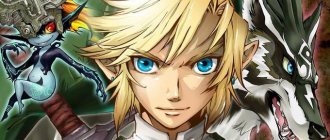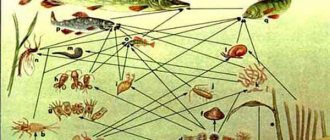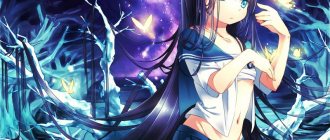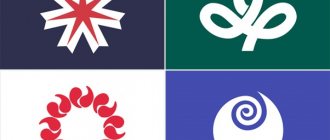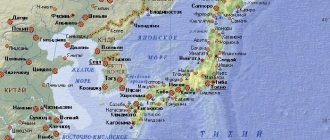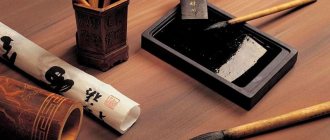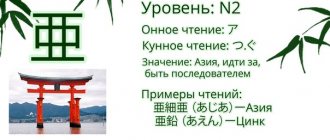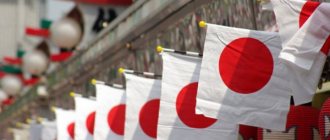Place of birth: Japan
The word "manga" in Japanese means "funny pictures": it consists of two kanji (kanji): man (whimsical or improvised, cheerful) and ga (pictures) 漫画. This term is also interpreted as “novels in pictures.” The easiest and most superficial definition: manga is Japanese comics.
The Japanese are proud that one of the most amazing phenomena in modern art and literature has its roots in their country. Back in the XII – XIII centuries. In Japan, a series of drawings appeared depicting frogs and rabbits with an unusual technique of drawing legs that imitate movements. In the XVIII-XIX centuries. books with funny pictures were prepared by famous Japanese artists Santo Kyoden and Hokusai Katsushika. Hokusai Katsushika is considered the originator of the term "manga".
The ancient image technology was used by modern mangaka - manga authors who invented their own style. Among the most successful manga artists were Osamu Tezuka, considered the founding father of modern mass-produced manga art, creator of the famous Astro Boy (Ambassador Atom), and Machiko Hasegawa, author of Sazae-san (Lady Sazae). Their painting technique included depicting beautiful characters with large eyes; they used close-ups and conveyed movements and emotions in the drawing.
Portrayal of emotions in manga (recommended by Tezuka)
A Brief Excursion into the Origins of Picture Stories
The manga previously bore the modest and understandable title “Stories in Pictures.” Archaeologists found the first mention of drawn stories in the first centuries of Japan. Researchers have discovered drawings that are structurally reminiscent of modern comic books in the tombs of ancient rulers, also called kofun mounds.
The spread of comics was hampered by the ambiguity and complexity of Japanese writing. Therefore, manga in Japanese is read from right to left, and not from left to right, illustrated with many black and white drawings, graphic special effects and a minimum of text.
The first Japanese comic book is considered to be Choujuugiga (“Funny Pictures from the Life of Animals”). They date back to the 12th century and were written by the Buddhist priest and artist Toba (another name for Kakuyu). Choujuugiga is made in the form of 4 paper scrolls. However, during Kakuya’s time, the work he created did not have a modern name.
Hokusai Katsushika gave strange and funny pictures, characterized by grotesque images, a single name - manga.
Manga as fine art
Manga as an art of drawing is on a par with the symbolism of Japanese poetry, when an object is only hinted at without naming it. For example, a mood or emotion is conveyed by a raised eyebrow or a drawing of a leaf falling from a tree; time - by the rising or setting sun or moon depicted in the background. The ease of perception of drawing by the Japanese was influenced by the specificity of hieroglyphic writing, when the text is not so important as the drawing.
A special feature of the image in manga is the black and white color, since the emphasis is not on color, but on action and plot. Colors are allowed on the cover or when highlighting the importance of any point. The drawings are viewed “in Japanese”: from right to left and “back to front”. In Russia, manga can also be published in the European manner - from left to right.
Manga as literature
In the 1950s and 60s, manga became an independent type of literature, dividing into many genres. Experts say there are about thirty of them. Among them, two main genres stood out: for boys (shounen manga) and for girls (shojo manga). In books for boys, the pictures are full of action, adventure, and struggle of all kinds; their themes include sports, technology, romantic stories with their own concept of heroes. Comics for girls mainly focus on romance and the adventures of superheroines; Themes also include dramas on historical themes.
Manga for adult men always contains action, often depicted humorously; For women, problems of relationships between men and women are more often described. There is a separate genre for young children; there is Seinen manga, which contains scenes of violence, and the Shunga genre of erotica.
Manga characters are most often ordinary people who find themselves in situations typical of an ordinary person. Comic book characters overcoming difficulties inspires optimism and gives hope to the average Japanese person.
Under the influence of Western culture, the heroes of Japanese comics began to be depicted in a certain style: big-eyed, with graceful small mouths, long hair, and rich facial expressions. Emotions are pointedly exaggerated: if a character cries, tears flow in a stream; if he laughs, his mouth takes up almost the entire face, and his eyes turn into slits.
Themes and genres
Although all three subjects of the article have been developing for decades, and their historical roots go back to the Middle Ages, manga is now the most branching and extensive in its coverage of topics and genres. If manhwa and manhua are mainly aimed at children and teenagers (not least due to the attitude of governments and publishing houses towards them), then in manga there are more often adult things - adults due to the themes raised and presentation, and not due to eroticism and dismemberment.
Manhwa, more often than its counterparts, goes into romance and romanticization, which manifests itself even in those genres that can do without them.
The wuxia genre came to manhua from Chinese literature - adventure fantasy with an emphasis on martial arts, schools of styles and their rivalry. In China, this trend is even more popular than samurai in Japan. In addition, there is a division between comics from mainland China and those produced in Taiwan and Hong Kong. The first are distinguished by serious government support and focus on a children's audience, but (probably for this reason) are lower in quality and inferior to the second in popularity. In turn, Taiwanese manhua is usually done in black and white, like manga. And the Hong Kong one, in its choice of plots, leans towards action, militants and that same wuxia.
More about the position of manga and light novels relative to other arts:
- How does a light novel differ from a manga?
- How does a light novel differ from a novel?
How to explain the phenomenon of manga popularity in Japan
Easy to read, accessible and convenient in format, manga has become a favorite form of reading for Japanese of all ages. Published in series, manga makes one look for a continuation; new items are discussed in any society. Manga are one-time books, which is why they can be found in a cafe where a previous visitor left them; There are also shops that sell used books or comic magazines. Now this is not only literature for reading, these are school textbooks, which provide a visual picture that is understandable to students of any level of performance. A series of textbooks on economics, technical instructions, and catalogs have been published. Japanese psychologists claim that with the help of comics, the essence of the problem is quickly grasped.
Over a period of more than 60 years, manga have become an important part of Japanese culture, depicted in books, television shows, anime and video games. For quite a long time, manga contributed a significant part to the formation of the Japanese economy, becoming one of the most widespread types of exported cultural products in the world.
Experts explain the success of Japanese schoolchildren and students at international competitions in computer science and programming by the characteristics of the brain, which is accustomed to a holistic perception of an action or phenomenon. They believe that this happened thanks to learning based on drawn pictures - manga.
But the majority of young manga authors admit that their goal is not to create a work of art or a teaching aid, but to entertain the reader.
Manga examples
Astro Boy (Ambassador Atom, Mighty Atom)
The famous manga series, written and illustrated by Osamu Tezuka, is comic fiction depicting a futuristic planet where Robots live alongside humans. The circulation of this series is approximately 100 million copies; manga is still popular today.
Interestingly, in the 1960s, parents opposed the publication of this manga for its depiction of violence; now this work is valued for its humanistic ideals. Perhaps the attitude towards robots, which have become part of the life of the Japanese, has changed.
Mrs. Sazae
Published in 1947, this manga, which tells with humor and optimism about the girl Sazae and her family, who had to survive the difficult times of the occupation and who found their place in life in the post-war period, is still one of the most sold.
Naruto
This is the story of the ninja Naruto, who is trying to achieve fame and be like his ideal - the most powerful ninja in their village. An anime and video games have been created based on the manga, which was published in 1997.
Slam Dunk
The sports-themed manga, which sold 120 million copies in 2012, is about a basketball team and its leader.
Case is closed
The manga periodical under this title is about a detective who helps the police investigate various cases.
Manga is conquering the world
People who are passionate about manga are called "otaku". There are otaku communities in almost all countries of the world, and they also exist in Russia. Fans of manga and anime promote this type of art, hold their own festivals, and publish their own magazines. Young people appreciate manga for providing an opportunity for self-expression through fine art.
One can express the hope that the world of manga will not overshadow the world of the traditional book, where descriptions of colorful pictures of nature, images of heroes with their actions, feelings and emotions are created in words, which develops imagination and speech.
The study of manga and its impact on the world is just beginning. If you want to make your contribution to science or journalism, take up this topic.
Especially for translation agency SVAN
Why do people of different ages read manga? Why is she popular?
The answer to this question is that manga is not limited to any one genre that may only be of interest to a limited group of people. Manga can be adventure, fantasy, detective, thriller, horror or even erotica or porn (hentai). From this we can conclude that each person can find exactly what he likes among the manga genres.
It is worth noting that although at first glance it may seem that manga is just entertaining reading with pictures, in fact this is not the case. Many representatives of this genre have a very deep meaning, confronting their readers with deep philosophical questions and problems of modern society.
